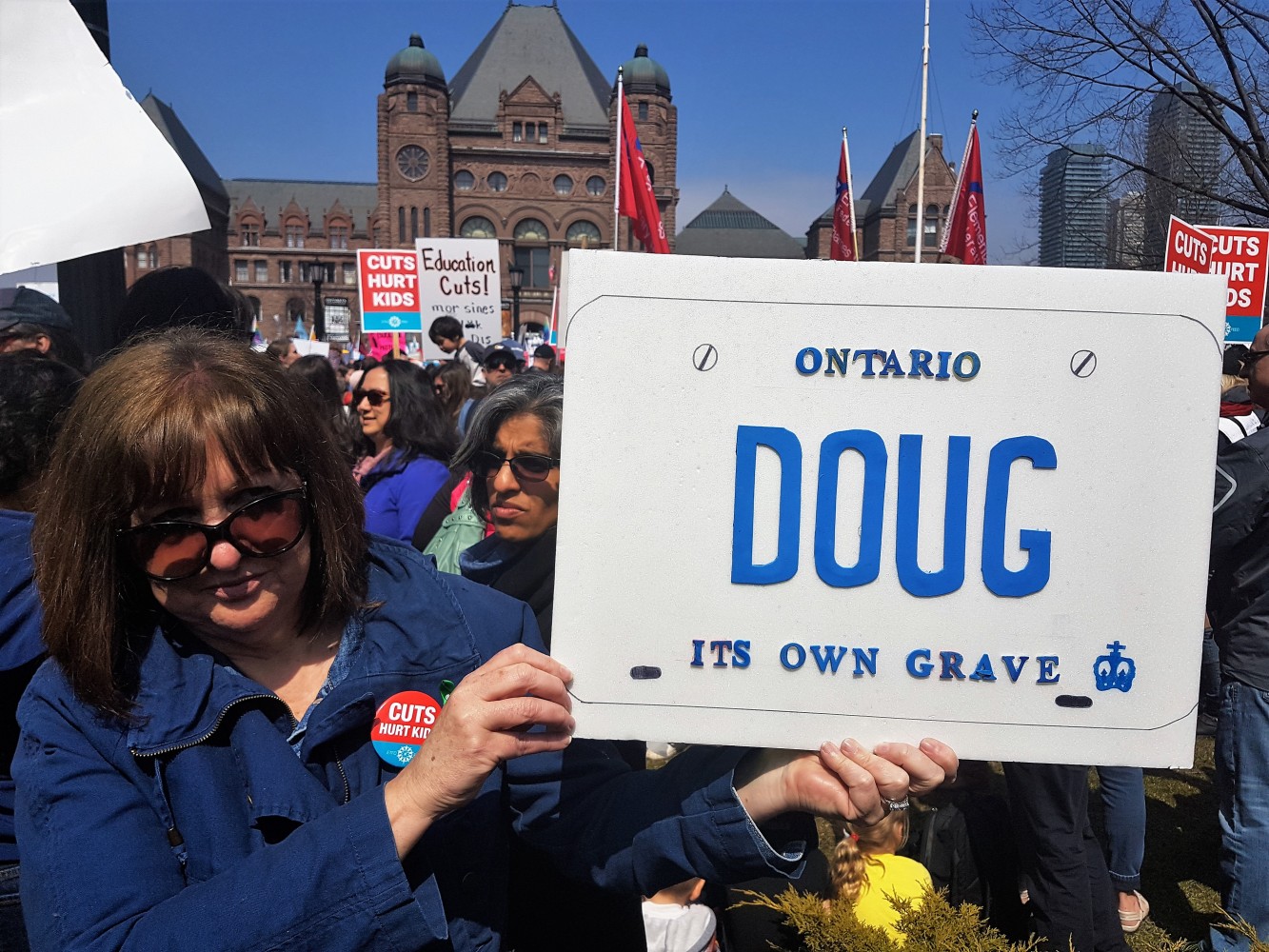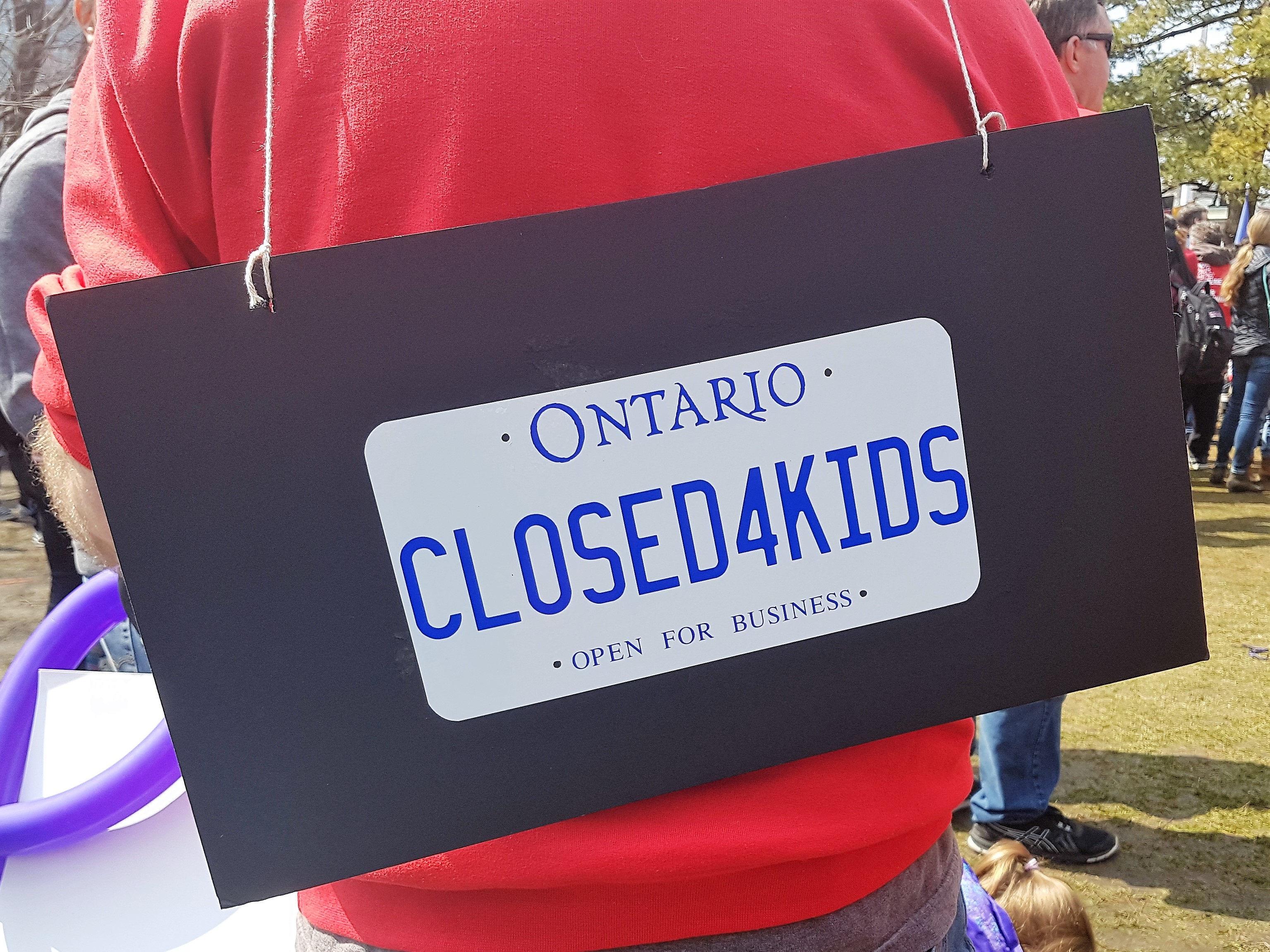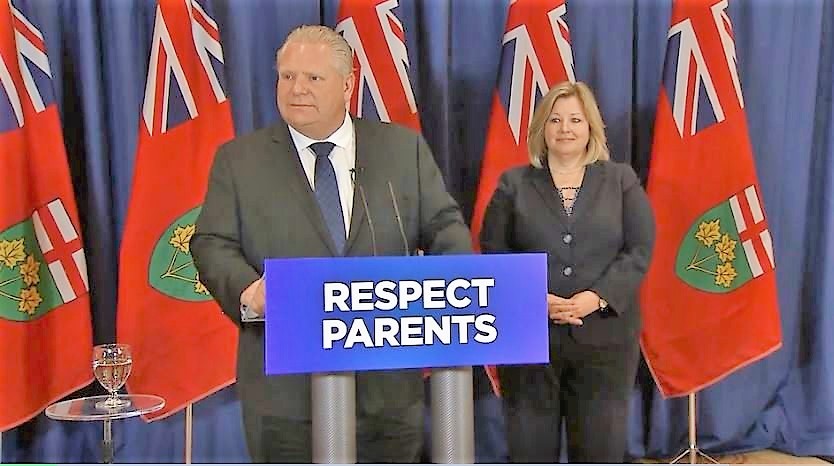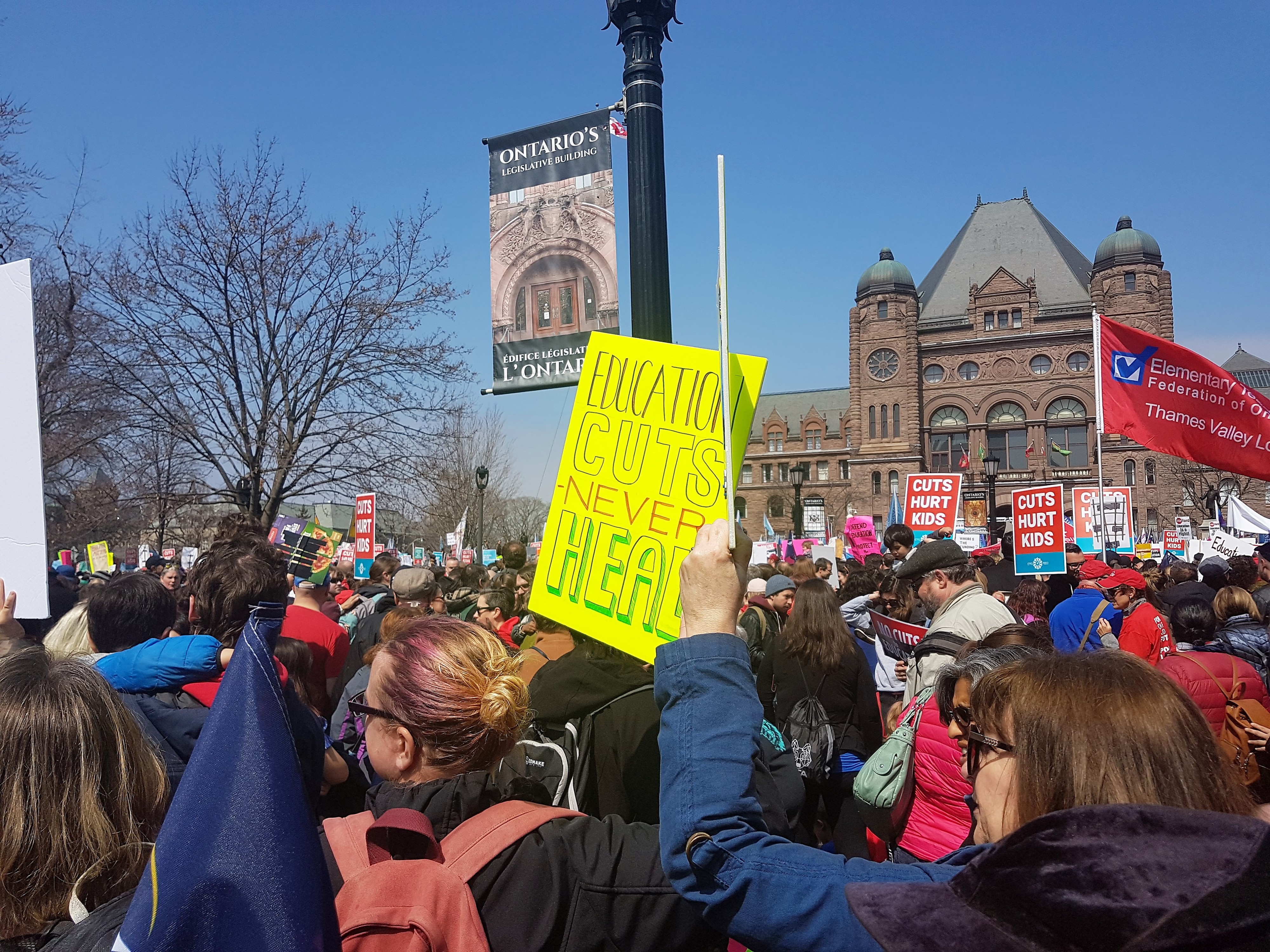
Peel Catholic board suffers $8 million cut in expected education funding
Of Peel Region’s two school boards, it looks like the Catholic one will be the bigger loser in changes to education funding announced Monday, when the Ministry of Education unveiled its basic Grants for Student Needs allocations for the coming school year.
The Peel District School Board’s overall funding for the 2019-2020 school year appears to have increased slightly from the previous year, rising to $1.8 billion with a net increase of roughly $4 million, or 0.2 percent, while the Peel-Dufferin Catholic District School Board is projected to see an overall cut in grants of $8 million.

Teachers protested against cuts to education at a rally in front of Queen's Park earlier this month
The drop to $916 million is the first cut to the Catholic board since 2015, down from $924 million in the previous year — a 0.9 percent decrease.
Even for the PDSB, with its rapidly rising student population, the tiny increase is well below increases in previous years, which have averaged 2.6 percent since 2015. The categories receiving cuts are identical between the two.
The largest cut is occuring in the Pupil Foundation Grant, which covers classroom costs such as teacher and Early Childhood Educator salaries, textbooks, library and guidance services. The allocation to the Catholic board will drop to $417 million (from $450 million), and for the PDSB it drops to $826 million (from $870 million).
Programs to help kids at risk of poor academic achievement will take a hit of about $9 million in the Catholic board and $2.5 million in the PDSB. The Learning Opportunities Grant is projected to go from $29 million down to $20 million for the Catholic board, while the public board could see its grants cut from $59 million to $43 million.

The province’s safety net for declining enrollment may get cut, alongside funding for salaries of trustees and school board administrators. The Catholic board’s new allocation will be $46,000 for the Declining Enrollment Adjustment, down from $658,000. It will be cut completely for the PDSB. The last of the cuts will be in the School Board Administration and Governance Grant, which will take a $232,000 cut down to $21.2 million for the Catholic board, while the public board’s grant will be cut from $40.6 million to $40.2 million.
The province has also introduced the Priorities and Partnerships Fund, some $330 million set aside to help school boards align curriculums and school priorities with the education priorities set by the current government.
“To facilitate school boards’ budget planning for 2019-20, today the Ministry is confirming approximately $185 million of PPF funding to school boards and school authorities to support Ministry priorities,” states a Ministry of Education memo released Monday.
“The Ministry announced a Priorities and Partnerships Fund (PPF), replacing the previous Education Programs – Other funding. For 2019-20, the PPF will provide up to $330 million in funding to support ministry priorities, including Indigenous education, math, mental health, parent engagement and special education,” said a statement from both school boards.
A swath of other funding allocations were announced as well. Both boards, in identical press releases, made almost no mention of the cuts but instead focused on the money they are getting, such as the PPF funding. The province is allocating about $15.2 million as a Behaviour Expertise Amount allocation, which will help boards hire more staff at the board level with expertise in an autism therapy program called Applied Behaviour Analysis (ABA) “and to increase training opportunities.” This follows a controversial decision to mainstream more autistic children full-time in regular classrooms, where few teachers have the specialized training to provide for their needs.
Some $40 million will be provided by the province as the School Renewal Allocation, which is cash set aside for school maintenance.
There appears to be no word yet on transportation changes.
The majority of the PPF will go towards implementing the ministry’s new four-year math plan, which Education Minister Lisa Thompson, criticizing the “discovery math” implemented under the Liberal-led government, has called “back to basics.”

Premier Doug Ford and Education Minister Lisa Thompson
“Less ideology and more skills. Our strategy will emphasize financial literacy by finally including it in mandatory curriculum in high school,” Thompson said when introducing the provincial government’s changes to education in March.
At that same announcement, Thompson revealed that high school class sizes will be increased from an average of 22 to 28 students, with classes rising by an average of one pupil in Grade 4 to 8. She also promised that no teachers would lose their jobs involuntarily as a result, while the Ontario Secondary School Teachers’ Federation argued that layoffs would be inevitable, with an estimated 5,500 job positions being eliminated and “attrition” through retirements and voluntary departures not nearly keeping pace.
The union issued formal notice on Monday to begin bargaining with the provincial government on renewing contracts with school boards across the province, which all end Aug. 31. It’s the first union to make that announcement, and it did so at least a month earlier than was typical in previous negotiations. The procedural move means both sides have 15 days to begin talking about which issues will be bargained at the provincial level and which at the level of individual boards and union locals.
With thousands of teachers now facing job anxiety, high school students concerned about losing electives and specialized programs as schools struggle to meet the new class-size averages, and parents in younger grades worried about how their kids will learn with fewer aides and supports, especially for autistic children, this season of bargaining may shape up to be the most contentious since the Mike Harris government of the 1990s, when teacher strikes closed schools across the province.
The OSSTF’s fears about job losses were confirmed when an internal ministry memo showed that 3,400 positions were on the chopping block. Earlier in April, the Peel board told The Pointer that 330 education workers have been given “surplus to board” notices, which means the board has more teachers than there are positions for them, “as a direct result of the cuts by the Ford Government.”

“As a result of increases to secondary class sizes, students will have less choice when selecting courses. We expect course re-selection to take place in many Peel secondary schools this Spring,” said statements from the Peel boards. Cawthra Park Secondary students have already been told they need to re-select their courses for Grade 12 because the school will be losing five teachers this fall.
Last week, the ministry, in the wake of angry protests and criticism, announced a $1.6-billion Attrition Allocation Fund to temporarily help boards stave off the need to lay off teachers.
“We are pleased to hear that the government will provide attrition protection funding to protect staff impacted by changes to class sizes and e-learning. Once we learn the board-specific details, staff who were impacted by these changes will be contacted,” the boards said.
Email: [email protected]
Twitter: @mansoortanweer
Submit a correction about this story


